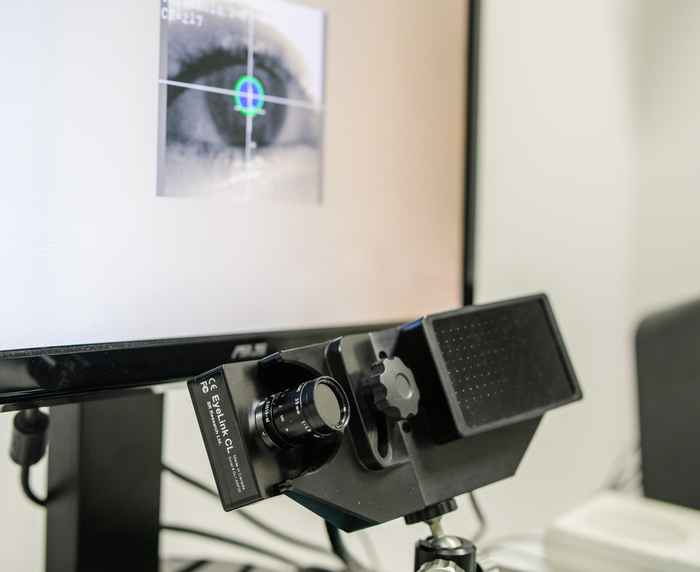Participate in Eye-tracking studies

What can I expect during Eye Tracking research?
In most Eye Tracking studies, you as a participant will perform a certain task on a computer with the Eye Tracking camera facing your eyes while performing this task. Sometimes you will be asked to place your chin in a so-called chin rest so that your head and therefore your eyes remain in the same place. As a participant, you will perform the examination in a quiet room while the test leader is in the connecting room. You will receive instructions about the task in advance. The eye tracker study can also be combined with other types of measurements, such as physiological measurements, EEG and even MRI. In that case, this will always be clearly communicated to you prior to the appointment.
What is expected of me?
During the examination you will be sitting in front of a computer with the camera facing your eye, the exact duration depends on the specific study. During the examination you will perform a "task" on the computer. This can look like a (simple) computer game or watching pictures or videos on the screen. How this task looks is entirely dependent on the question and purpose of the research. You will be informed in advance.
How do I prepare for Eye Tracking research?
You do not need to prepare anything for an Eye Tracking study. However, you may be asked to remove your eye make-up in advance and (if you have both) wear lenses instead of glasses.
Can I participate in Eye Tracking research?
In principle, anyone can participate in eye tracking research. However, sometimes it is more difficult to get a good signal if you wear glasses or hard contact lenses, for example. A researcher therefore might choose not to use eyeglass wearers in the experiment. Always take a good look at which target group is being sought for the research you are registering for, and whether you belong to that target group.